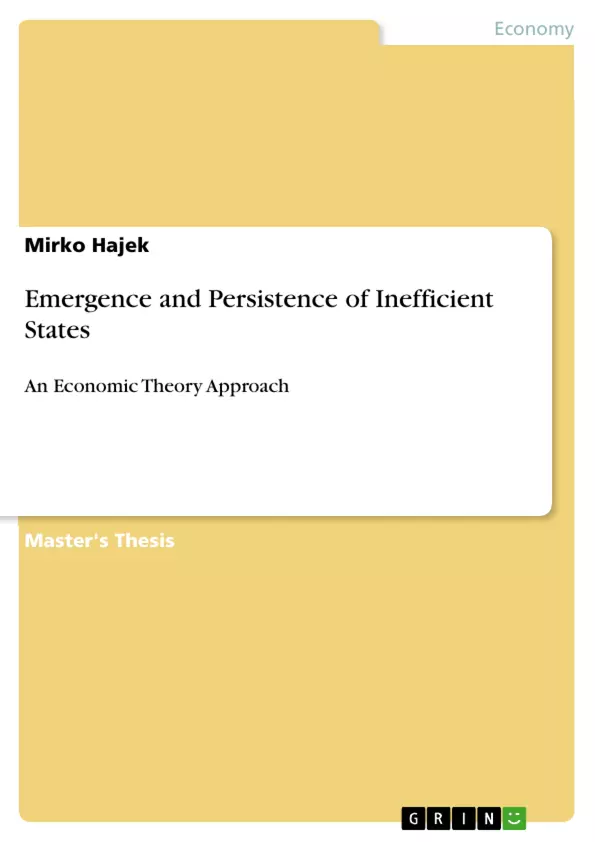Bureaucratic inefficiency, patronage-induced overstaffing, and outright corruption retard economic development and reduce public well-being in developing countries. They prevent governments from effectively carrying out the economic plans to which they devote so much official attention, and deprive citizens of government services to which they are legally entitled. (Geddes 1991, p.371)
Corruption, patronage and inefficient bureaucracies are widespread in many countries and under all forms of government. Whereas such problems are often recognized to be at the core of rent-seeking regimes like dictatorships or oligarchies, they occur in similar ways in developing and even in developed democracies. For instance, there is evidence for bureaucratic inefficiency, corruption and patronage in Brazil (Weyland 1996), but also in Germany (Braendle 2012) and France (Facchini and Melki 2013).
A rich body of research however underlines the importance of good institutions as main determinants of economic development, growth and prosperity. But why and under which conditions do some societies choose inefficient institutions? This is the main question the thesis seeks to answer.
A related second question concerns a possible explanation for the setup of inefficient institu- tions: Why do democracies often pursue relatively elite-biased policies contrary to the predictions of the median-voter-theorem? As Acemoglu (2010, p.1) notes, institutions are often “structured to maximize the rents captured by the elite, the individuals or social groups monopolizing political power". In electoral democracy, the influence of different social groups should be closer related to their population share than in nondemocracy. However, the distribution of political power can by diluted if institutions reshape political influence and redirect government spending towards the top.
The thesis tries to bring together the two issues by elaborating a possible explanation for the link between the emergence of inefficient institutions and the prevalence of pro-elite policies.
Inhaltsverzeichnis (Table of Contents)
- 1. Introduction
- 1.1. Motivation
- 1.2. Some Historical Observations
- 1.3. Benefits of a Political Economy Approach
- 1.4. Structure of the Thesis
- 2. The Political Economy of Inefficient Institutions
- 2.1. Setting the stage: State Capacity, Inefficiency and Bureaucracy
- 2.1.1. Inefficient Institutions
- 2.1.2. Institutional Change
- 2.1.3. State Capacity
- 2.1.4. Bureaucracy
- 2.2. Inequality, Democratic Transition and the Median Voter Puzzle
- 2.2.1. Initial Inequality and Political Conflict
- 2.2.2. Democratic Transition and Inequality
- 2.2.3. The Median Voter Puzzle
- 2.3. Related Literature
- 2.3.1. Why Societies End Up with Inefficient Institutions
- 2.3.2. Literature on Inefficient States
- 2.3.3. A new Perspective on the Emergence of Inefficient States
- 2.4. Empirical Evidence
- 3. Emergence of Inefficient States under Patronage Politics
- 3.1. Economic and Political Framework
- 3.1.1. Tax Evasion, Effort Decision and State Organization
- 3.1.2. Political System
- 3.2. Timing of Events
- 3.3. Equilibria
- 3.3.1. Constraints and the Government Budget
- 3.3.2. The Comparative Cases: Permanent Democracy and Nondemocracy
- 3.3.3. Emerging Democracy: an Inefficient Equilibrium
- 3.4. Comparative Statics
- 3.4.1. Characteristics of an Inefficient State
- 3.4.2. Inequality and Inefficiency
- 3.4.3. Nondemocracy, Democracy or Emerging Democracy?
- 4. Discussion and Extension
- 4.1. Critical Assumptions and the Inefficient State
- 4.1.1. Agents and Democratic Transition
- 4.1.2. Public Expenditure
- 4.1.3. Taxes
- 4.1.4. Preferences and Inefficiency
- 4.2. More Comparative Statics
- 4.2.1. Excessive Bureaucracy
- 4.2.2. Tax Rates and Inefficiency
- 4.3. Extensions
- 4.3.1. The Middle Class and the Inefficient State
- 4.3.2. Progressive Income Taxation
- 4.3.3. Endogenizing Inefficiency
- 4.3.4. Distribution Costs
- 4.4. Potential and Limits
- 4.4.1. Explaining Inefficient States
- 4.4.2. Limits
- 4.4.3. Contributions to Related Research
- 4.5. Persistence
- 4.5.1. Determinants of Persistence
- 4.5.2. When Inefficient States Persist
- 5. Concluding Remarks
Zielsetzung und Themenschwerpunkte (Objectives and Key Themes)
This master's thesis analyzes the emergence and persistence of inefficient states through an economic theory approach. The work builds upon and extends a model developed by Acemoglu et al. (2011), exploring the political economy dynamics surrounding inefficient institutions and their impact on societal development. The thesis aims to provide a theoretical framework for understanding how inefficient states arise during democratic transitions and why they may persist despite their negative consequences.
- The emergence and persistence of inefficient states during democratic transitions
- The role of patronage politics and rent-seeking in creating and sustaining inefficient institutions
- The interplay of inequality, political power, and the median voter puzzle in shaping institutional outcomes
- The impact of different economic and political factors on the likelihood of an inefficient state emerging and persisting
- The significance of the middle class in influencing the emergence of inefficient states
Zusammenfassung der Kapitel (Chapter Summaries)
Chapter 1 introduces the topic of inefficient states, providing motivation, historical observations, and the benefits of a political economy approach. It also outlines the structure of the thesis.
Chapter 2 delves into the political economy of inefficient institutions, defining key concepts such as state capacity, inefficiency, and bureaucracy. It then examines the role of inequality, democratic transitions, and the median voter puzzle in the emergence of inefficient states.
Chapter 3 presents a model of inefficient state emergence under patronage politics, outlining the economic and political framework, the timing of events, and the equilibrium conditions. It also analyzes the comparative statics of the model, exploring the relationship between inequality, inefficiency, and the emergence of different political regimes.
Chapter 4 discusses the critical assumptions of the model and explores extensions that incorporate a middle class, progressive income taxation, endogenized inefficiency, and distribution costs. This chapter also analyzes the potential and limits of the model for explaining inefficient states and its contributions to related research.
Schlüsselwörter (Keywords)
The main keywords and focus topics of this thesis include inefficient states, patronage politics, democratic transitions, inequality, rent-seeking, state capacity, bureaucracy, median voter puzzle, middle class, and political economy.
- Arbeit zitieren
- Mirko Hajek (Autor:in), 2014, Emergence and Persistence of Inefficient States, München, GRIN Verlag, https://www.grin.com/document/307121



